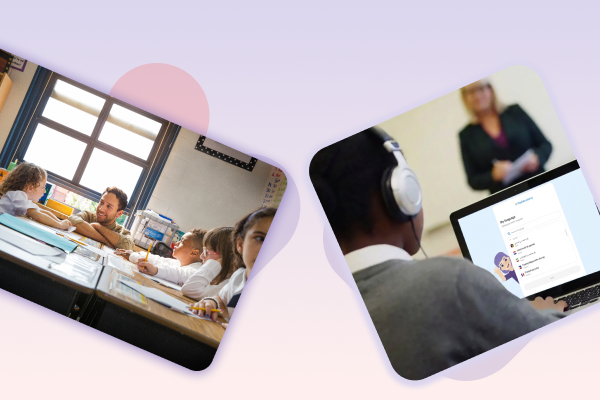

If you are about to embark on your NQT year and you don’t feel properly prepared to teach EAL pupils, you’re not alone. Many teachers report lacking confidence and training in this area. Luckily, there are some ways that you can prepare yourself for the experience.
Learn a language
Have you ever learned a language before? Think back over your personal language learning experiences. What did you enjoy (or not) about them? What did you find difficult? Chances are that some of your EAL learners may share some of these feelings. If it’s been a while since you were sitting in Year 9 French, try learning a new language with FlashAcademy®. Did you know you can change the audio and subtitles languages on Netflix? You can also download the Language Learning with Netflix extension for Google Chrome which enables you to activate subtitles in two different languages simultaneously. Putting yourself in the position of your learners can increase your ability to empathise with their situation and identify ways to support them.
Brush up on grammar
Speaking English as your first language does not mean that you know how to teach it. Try to increase your awareness of the English language and its nuances by improving your own grammar. These simple grammar videos cover some of the main language areas that pupils will need to understand. In addition, you may want to read books like ‘Practical English Usage’ which answers common questions that teachers and learners have about English grammar. Then, if an EAL pupil asks you a question or you need to explain a mistake in their work, you will be more prepared to teach the grammar point effectively.

Research
If you’re reading this blog, you’ve taken a good first step. Anything you can do to try to learn more about current issues in EAL will be helpful. You can watch a webinar to learn about how to increase your language awareness and improve your ‘teacher talk’. Join the EAL Success Facebook group to connect with other teachers supporting EAL learners, get advice and share resources. You can also get up to date on English language teaching pedagogy by exploring the British Council website.
Identify difficulties in your subject
Get yourself prepared to teach EAL pupils by taking a closer look at the language demands of your subject. Read your subject specification and highlight any subject-specific vocabulary or language skills that your pupils will need. Does your subject often use particular language structures? Science is full of passive constructions and History relies heavily on the past tense. Consider how you will support pupils to understand and use these accurately. If your subject requires a lot of writing, think about how you could scaffold writing tasks effectively, provide prompts or use classroom aids like bilingual dictionaries.

Get a taste of language teaching
If you want to get a taster of language teaching, why not sign up for a language exchange? This way, you can practise the new language you’ve started learning, as well as gain a greater understanding of difficulties learners of English might face. Using an app like HelloTalk will get you used to identifying and correcting language mistakes and give you experience in giving learners effective feedback.
Learn about your learners
We’ve saved the most important point until last here. To become truly prepared to teach EAL learners, you need to understand who they are, where they came from and the languages they speak. Think about the location of your school; what’s the demographic of the community? Can you ask where their EAL pupils usually come from? If there are large groups with the same first language, it’s a good idea to research it. These learner profiles give you background to different home languages and suggest ways in which home languages may affect English learning.
As with any pupil, EAL learners each have their own story and life experiences. When you meet your pupils and get to know them individually you will learn the best ways to support each one. Until then, use the ideas in this post to help you feel more prepared to teach EAL pupils, and follow FlashAcademy® on Twitter for more ideas.

